by Yoav Limor
Although it flies in the face of traditional Israeli defense strategy, a preventative strike to eradicate the conventional threat of Hezbollah's precision missile project in Lebanon might be unavoidable.
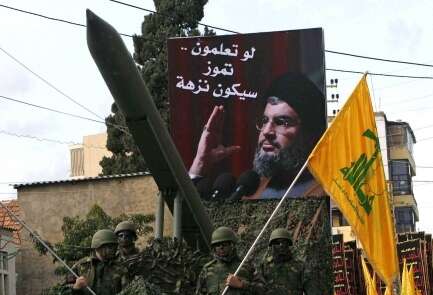 |
| Photo: AP |
Hezbollah's missile arsenal is perhaps one of the only threats the Israeli public is not aware of in terms of its full scope. The threat is strategic and could force an Israeli preventative strike, even though the catalyst is not nuclear weapons. It is also the most burning issue facing the IDF's high command today.
Follow Israel Hayom on Facebook and Twitter
It must be noted: Israel has no intention of launching a war in the north. Neither does Hezbollah, to the best of everyone's knowledge. Since 2006, the sides have built a mutual balance of deterrence along the border, which in advance all but negates any adventurous inclinations one of the sides might harbor. This is evidenced by Hezbollah's hesitance, which for several months now hasn't followed through with its threats of revenge for the killing of an operative at Damascus airport in the summer. Israel, too, is proceeding with caution and hasn't responded to Hezbollah's attempt to shoot down an air force drone over Lebanon.
Behind this restraint, however, both sides are preparing for war. It could erupt at any moment: the death of a Hezbollah operative in Syria that triggers an attack on Israeli soldiers or civilians, which in turn forces a counter-response, at which point everything depends on nerves and yet-untested containment mechanisms. It is no coincidence that the IDF exercise two weeks ago or the air force drill last week, simulated this exact scenario.
Hezbollah learned quite a few lessons from the Second Lebanon War. Publicly, of course, it claims it won. As is the case with any terrorist group, not losing is a victory. Internally, however, it was forced to engage in difficult introspection due to the blows it sustained. Hassan Nasrallah admitted at the time, in a rare moment of honesty, that he wouldn't have abducted the Israeli soldiers had he known the outcome in advance.
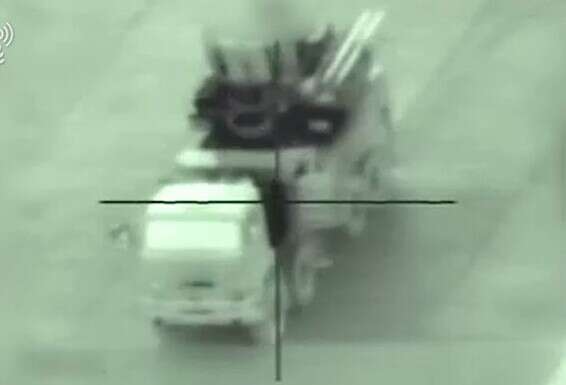
Like any serious organization (and Hezbollah is a very serious organization), it implemented an organized process of inquiry and learning. In terms of defense, it learned it is powerless against Israel's air superiority and precision: In the Dahiyeh neighborhood in south Beirut, the group's stronghold, some 180 buildings and other targets were hit, all of them precisely. The organization was also surprised at the breadth of Israeli intelligence, which at the start of the war allowed Israel to strike its medium- and long-range rockets, thus impeding its ability to target anything south of Haifa Bay.
In terms of its offensive capabilities, Hezbollah noted with satisfaction that Israel was shell-shocked in the face of 4,000 rockets and after direct hits in particular, for example at the train yard in Haifa (eight killed) and the reservist gathering point at Kfar Giladi (12 killed). Hezbollah also learned that it wants to move the fighting into Israeli territory. The tunnels that were detected two years ago along the Lebanese border were meant to allow the group to "conquer the Galilee" and win the perceptual war in its earliest stages.
Immediately after the Second Lebanon War, in complete disregard for UN Security Council Resolution 1701, which placed a full embargo on Hezbollah weapons smuggling, the organization launched a massive logistics operation – with $1 billion in Iranian funds – to acquire tens of thousands of rockets, essentially making it the most powerful terrorist army in the world. "Terrorist army" is commonly used in the IDF even though the term is in dispute – some experts believe it gives the organization too much credit because, after all, it is a terrorist organization untethered to a government.
According to updated assessments, Hezbollah currently possesses between 120,000-140,000 short-range rockets (range of 25-28 miles), which cover Israel's north, including Haifa Bay and Tiberias; several thousand medium-range rockets (range of 56 miles), which can reach the Sharon coastal plain and northern suburbs of Gush Dan; and several hundred long-range rockets and missiles (range of hundreds of miles), including Scud missiles from Syrian military warehouses, capable of hitting targets anywhere in Israel.
Hezbollah's rockets and missiles are dispersed throughout Lebanon. Its short-range rockets are mostly stored in the country's south, in the area near the Israeli border, to maximize their range. They are hidden in homes in the 230 Shiite villages, ready to be activated at a moment's notice. It is from here that Hezbollah intends to rain fire on the Galilee, and essentially paralyze it. If the IDF decides to enter these villages on the ground to stop this barrage, it will be met with an array of fortifications and ambushes.
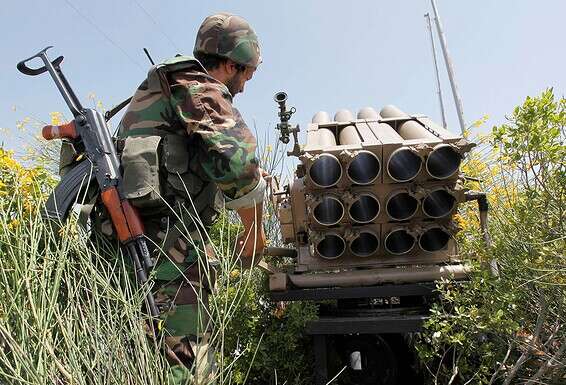
The other missiles, made in Iran and Syria, are dispersed across the country. The longer their range, the farther Hezbollah can store them from the border with Israel. This makes hunting them far more challenging for Israel's intelligence services and air force.
Israel's air-defense is not built to cope with this amount of rockets. As a rule of thumb, it is designed to intercept all ranges, but the brunt of its energy will be focused on intercepting long-range missiles and defending strategic sites. Israel's Iron Dome (short-range) and David's Sling (medium-long-range) missile defense systems will be tasked with this countering this threat. David's Sling is also responsible for intercepting cruise missiles. These systems are also supposed to distinguish between precision and unguided missiles and prioritize the interception as needed.
The purpose of Hezbollah's immense missile arsenal is to deter Israel from launching a war. In actuality, however, it is part of a more comprehensive plan spearheaded by the former commander of Iran's clandestine Quds Force, Qassem Soleimani, who was assassinated in Iraq last year by the Americans. His idea was to surround Iran's enemies from all directions with a terroristic missile threat, and Hezbollah's arsenal was just one component of this plan.
Another component is the aid Iran gives to Hamas and Palestinian Islamic Jihad in Gaza. Iran wants to solidify another front against Israel, in Syria, comprising militias operating at its behest. The idea was to build naval, air, and land bases manned by Afghani and Pakistani fighters, arm them significantly (mainly with rockets but not only), and carry out shooting attacks against Israel.
Israel identified this trend in time. Many of the airstrikes attributed to it in recent years were intended to foil Iran's entrenchment efforts, not just in Syrian territory near the border, but throughout the country. For example, the Israel Air Force was accused last month of attacking infrastructure in the Deir ez-Zor region near the Syria-Iraq border, where these militias were stationed but have since been forced to move eastward toward Iraq after failing to solidify a foothold deep inside Syria. It was the first time Israeli jets attacked this part of Syria since destroying the nuclear reactor there in September 2007.
The resolute action Israel has taken in Syria is largely a consequence of its failure in Lebanon. Up until the latter part of 2012, Israel anxiously watched as Hezbollah armed itself, doing nothing because the political echelon feared another war in the north. Declarations by Israel's leaders after the Second Lebanon War, whereby "Hezbollah will not be allowed to rebuild its strength," proved baseless. A monster has been built in the north.
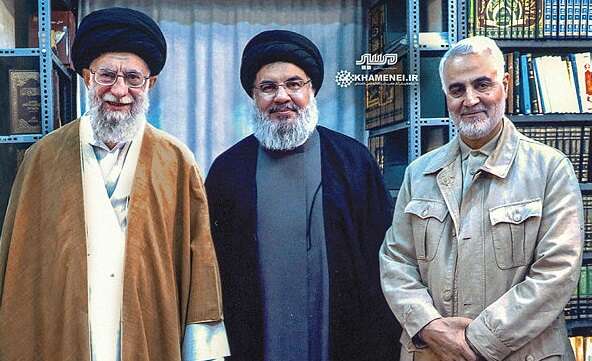
The Syrian civil war changed the picture. After a period of orientation, Israel understood it had an opportunity – and began taking action. Under the whitewashed codename "foreign sources" came reports of thousands of Israeli airstrikes in Syria, and if, at first, every attack was earthshattering news, today such attacks are barely reported. These attacks are anything but normal: they are each is a complex and often dangerous operation, which could result in a downed plane or civilian casualties. The fact that this hasn't happened (except for one instance in which an F-16 was hit and its pilots ejected safely over Israeli territory in 2018), is proof of the IAF's absolute superiority in the arena.
After its accelerated armament in the wake of the Second Lebanon War, Hezbollah concluded it was oversaturated in terms of missile quantity, and began investing in improving its precision capabilities. This term, "precision," could be misleading for those unacquainted with the subject, but it is critical: The majority of Hezbollah's arsenal today, and that of Hamas, consists of "dumb" statistical rockets. The person firing them cannot control where they hit, and to inflict real damage a large number of rockets need to be launched. Hence, almost half of the rockets fired by Hamas during Operation Protective Edge in 2014 landed in open fields or in Gaza, similar to many of the Scud missiles Saddam Hussein fired at Israel during the Gulf War in 1990-91.
Precision missiles are another world altogether. They are fitted with navigation systems, which help them hit targets with considerable accuracy. One of Hezbollah's key missiles is the M-600 ("Tishrin"), manufactured in Syria and predicated on the Iranian Fateh-110 missile. This missile has many variants, has a range of 250 kilometers (155 miles), and can carry a half-ton warhead. Its accuracy is currently a radius of dozens of yards from the target. Other missiles are precise at a radius of 100 yards. This means that if Hezbollah places the crosshairs on IDF headquarters in Tel Aviv (the Kirya), the missile will strike anywhere from Azrieli towers, Sarona market, Ichilov hospital and Ibn Gavirol Street.
For anyone looking to kill as many civilians as possible, this is accurate enough, but anyone who wants to paralyze a country needs more than this. Hezbollah wants to be able to do to Israel what Israel did to it during the Second Lebanon War: Hit strategic facilities (power stations in particular), military bases (specifically air force), government buildings (mainly in Jerusalem), to produce an image of victory. Precision, therefore, is critical.
The person who orchestrated Hezbollah's aggressive missile armament project after the Second Lebanon War was Imad Mugniyeh. Following his assassination in February 2008 in Damascus, in an operation attributed to the Mossad and CIA, he was replaced by his cousin and brother-in-law Mustafa Badredinne – also a founding member of the organization. In May 2016, Badredinne was also assassinated in a joint Hezbollah-Iran operation. The official excuse was his love of alcohol, women, and side hustles, but the real reason he was killed was his disagreement with Soleimani over Hezbollah's involvement in the Syrian civil war. His death put the missile project in the sole hands of Nasrallah and Soleimani.
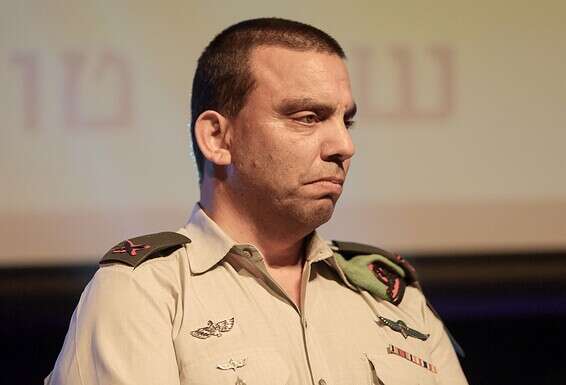
In the beginning, Hezbollah's quest to acquire precision missiles was clumsy. The precision missiles were manufactured in Iran and flown to Damascus. In 2013, when current Defense Minister Benny Gantz was IDF chief of staff and Amir Eshel was commander of the air force, Israel launched a campaign to prevent precision capabilities from reaching Lebanon. This campaign is still ongoing, and each operation or airstrike carried out within its framework receives a different name.
The attacks in Lebanon accelerated in 2014, slowed down somewhat in 2015 when Russia joined the fray to save the Assad regime, and again accelerated in 2016 when Israel understood it had considerable leeway to act, despite the Russian presence in Syria. At the same time, the other side also realized something: Soleimany understood the Islamic State group had been defeated and the Assad regime saved, and he identified the opportunity to entrench Iranian hegemony in Syria. He had three primary objectives: establish a foothold for Iran and its proxies on Syrian soil; indoctrinate the Syrian people through Shiite clerics flown in from Iran; seize control of Syria's weapons industry.
Syria is home to a developed weapons industry, which can be traced back to Russian expertise and years of preparing the Syrian army for war against Israel. Most of this activity comes out of the Scientific Studies and Research Center.
Soleimani's idea was simple: manufacture the missiles on Syrian soil, thus negating the threat of attack on Iranian weapons shipments. Iran would fund the project, Syria would make the missiles, and from there they would be transferred to Lebanon. Assad was powerless to oppose this plan; he owed his life to the Iranians and Hezbollah, and also owed them $80 billion for equipment, aid, and loans he received. Beyond that, the missile factories would provide jobs and wages for thousands of Syrians.
Israel identified this process and began methodically attacking these facilities and other manufacturing infrastructure in Syria. According to published reports, many dozens of these airstrikes have been carried out.
Israeli determination to attack was met with Iranian determination to manufacture. If manufacturing in Iran had failed, and manufacturing in Syria had failed, the next phase was to move the project to Lebanon. This time, the plan didn't include making the whole missile from scratch. Hezbollah doesn't have this ability, which requires a developed military industry with dozens of scientists and large factories. Instead, they opted for a process of conversion: take an old model of a "dumb" rocket smuggled in from Iran and Syria, and fit it with GPS, wingtips and a small-computer so it can be guided precisely to a target.
All of these components can be purchased online, but Hezbollah receives them from Iran. The computer itself is based on an algorithm with exceedingly simple aerodynamical equations. The conversion process, too, is rather simple and takes several days, at which point more adjustments and calibrations are likely required and the wingtips must be tested to ensure proper movement.
According to various reports, the conversion process can produce a rocket with a 20-30 yard precision radius. Accurate enough to hit a power station or building, but not enough to put a missile through a specific window or assassinate someone. This would require a different level of technological sophistication and real-time intelligence capabilities only possessed by the world's military superpowers.
The size (or lack thereof) of the components needed for this conversion process, specifically the laptops, testify to the complexity of the IDF's task, and to the magnitude of its success thus far. Ultimately, a large number of the airstrikes attributed to Israel target these tiny laptops, without which dumb rockets can't be made precise. Considering the quality of the real-time intelligence required, and the level of risk and precision undertaken by the air force, this is an impressive operation by all standards. In the words of Maj. Gen. Tamir Hayman, the outgoing commander of the IDF's Military Intelligence Directorate, there are currently a few dozen precision missiles in Lebanon.
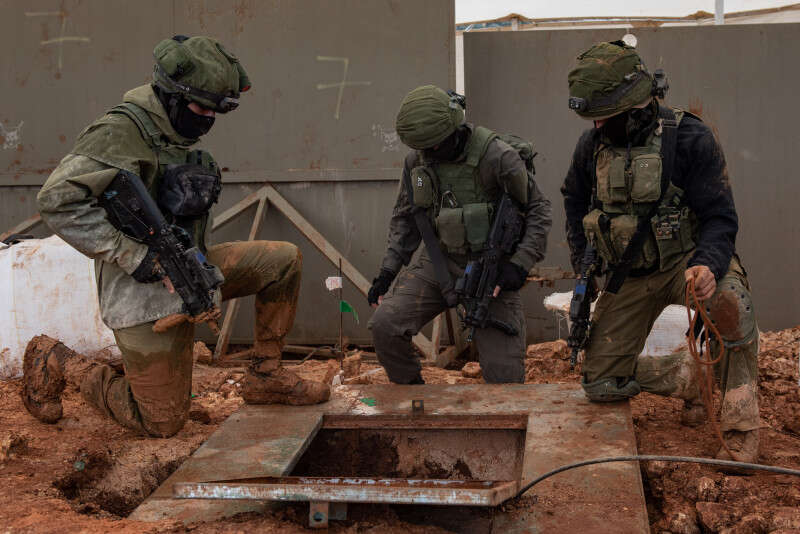
During the Second Lebanon War, Hezbollah fired some 200 rockets a day at Israel. In the next war, it intends to fire thousands. Israel doesn't have the ability to intercept all of them or even most of them, which means the damage to the Galilee region will likely be immense. On the other hand, the potential damage of each individual rocket is relatively low, and the bomb shelters and fortified rooms should provide sufficient protection.
As part of its war against this project, Israel isn't only employing military means. It is using diplomacy and applying international pressure; it is fighting economically and is openly waging a public relations campaign. Twice in recent years, Prime Minister Benjamin Netanyahu has publicly revealed the existence and location of Hezbollah's precision missile factories in Lebanon. The first time was in 2018 at the UN General Assembly, when he exposed three facilities; and the second time was in 2020 in a recorded address to the General Assembly, in which he exposed other facilities, including a rocket factory in the heart of a civilian neighborhood in Beirut.
In both cases, Hezbollah denied the allegations. These denials were mostly intended for Lebanese ears: The situation in Lebanon has never been worse, and the country is coping with the most severe economic and social crises since its inception. Hezbollah, which has been part of the Lebanese government for a while now and in many regards controls the entire country, is perceived as partially responsible for the situation and it's doubtful the Lebanese public would be empathetic toward anyone who might trigger another calamity, certainly not after the trauma of the devastating blast at Beirut port last summer.
Israel's decision to procure new aircraft and interceptor missiles for the air force mainly stemmed from its assessments pertaining to the northern front, where the Institute for National Security Studies said in its annual report a war is most likely to erupt. The working assumption is that such a war will not be confined to Lebanon, rather will expand to include Syria (and maybe Iraq). It's possible that Syria itself will act against Israel, to repay Iran and Hezbollah for their generous aid throughout the civil war. It's also possible that Shiite militias in Iraq will fire missiles at Israel, and perhaps even Iran-backed Houthi rebels in Yemen will join the fray.
Beyond a certain missile barrage, is also the threat of cross-border infiltration. Unearthing Hezbollah's underground tunnel project severely damaged the group's plans, but this threat hasn't been completely negated. Hezbollah's elite Radwan Unit intends to raid Israeli territory and seize control of communities or military outposts. In an effort to counter this threat, Israel has built high walls to buttress certain parts of the border.
In recent years, Hezbollah has also invested in drones. Although it used them in the Second Lebanon War, since then it has made considerable progress in this field and today possesses a wide array of small drones, including those that can carry explosive payloads hundreds of kilometers.
The IDF has numerous tools at its disposal to counter this threat. One of them is jamming their frequencies, which disrupts the flight path and sometimes causes the targeted drone to crash. The challenge is to do this without compromising communication on the Israeli side.
But above all else, as stated, the most pressing threat from the IDF's perspective are the precision missiles. The matter is so grave, that the chief of staff and his deputy handle it personally on a permanent basis. This means routine briefings, planning, and closely monitoring developments on both sides of the border.
The overriding view in the IDF, as of now, is that the "precision" threat is tolerable and can be countered. This calculation takes into account the nature of the missiles in Hezbollah's arsenal, their damage potential, the intelligence picture that will facilitate their destruction at the outset of the next war, and the army's ability to disrupt and intercept missile launches. Assuming that a few precision missiles will make it through, the question is how much damage they will cause.
All of this is supposed to produce a magic number, which needs to be Israel's red line. A line which, if crossed, the IDF must launch a preventative strike, in the estimation that doing so will come at a lower cost than a future war. Thus far, Israel has not specified such a number. Some experts say the number is 500 precision missiles, others say the number should be 1,000 missiles. As stated, Hezbollah is still far from these numbers, but the horizon is clear: It is continuing to manufacture and smuggle them.
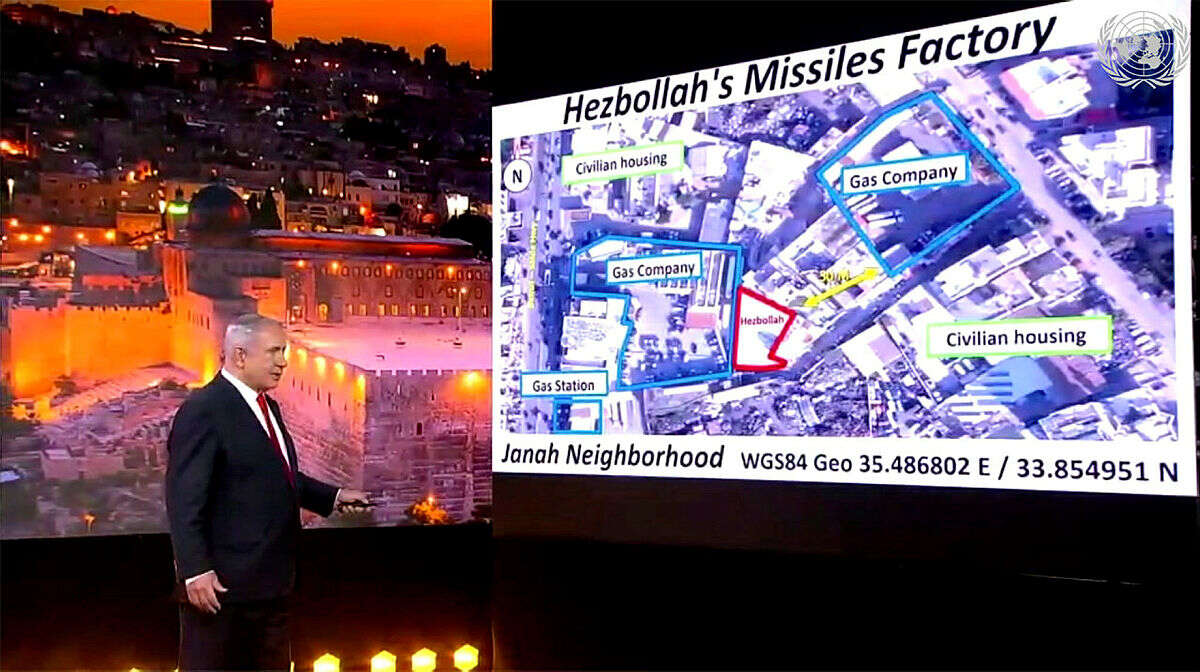
Those who argue that setting a specific red line is a bad idea believe the situation is dynamic and that Israel is continually acquiring tools that alter the picture and equation. Conversely, the concern is that Israel will constantly acclimate itself to a new reality. Like a frog in the pot, slowly stewing until it is completely boiled. Israel stewed idly as Hezbollah accumulated tens of thousands of "dumb" rockets and could do the same with the precision threat.
The common view in the IDF and among civilian experts is that Israel must define its red lines, and the fact that it hasn't done so yet is a serious problem that needs immediate fixing.
"If Hezbollah crosses a quantitative or qualitative threshold for precision weapons, we will have to act against it. This is a serious decision, but one from which we cannot run away," Lt. Col. Eran Niv, the head of the IDF's Warfare Methods and Innovation Division, told Israel Hayom.
"Beyond Iran's nuclear program, this is the greatest threat to Israel today. This is the event, with a capital T. It is the focus of situational assessments. It is the scenario used in training exercises. Everything is geared in that direction, but so is the response. In the meantime, we are trying to act in other creative ways, which won't allow [Hezbollah] to get there," said Niv.
Niv is among those who believe it's imperative for Israel to determine its red lines. Not just in terms of quantity but quality. For example, if Hezbollah were to transition from smuggling precision components to mass-scale production of precision missiles in Lebanon. "We need to mark a quantitative and qualitative threshold, which if crossed will require us to take other actions," he emphasized.
Hezbollah isn't there yet, but this could change soon. Lifting the economic sanctions imposed on Iran, as part of the United States' expected return to the nuclear deal, will free up considerable funds for Iran's proxies in the region, chief among them Hezbollah. If Tehran and Beirut sense that the Americans are restricting Israeli activity, or support the Jewish state less, they could feel emboldened enough to accelerate and greatly expand the precision missile project.
"Hezbollah views us exactly how we view it – as someone plotting to attack it," says Middle East expert Prof. Eyal Zisser of Tel Aviv University. "It wants precision capabilities to deter us. A few thousand more missiles won't change anything, but precision missiles, from its perspective, are a tiebreaker. And because it is struggling to smuggle precision components from Syria, it wants to manufacture them in Lebanon."
Former MID chief Maj. Gen. (res.) Amos Yadlin, who is currently head of the Institute for National Security Studies, is a firm believer and prominent voice calling for Israel to define its red lines now.
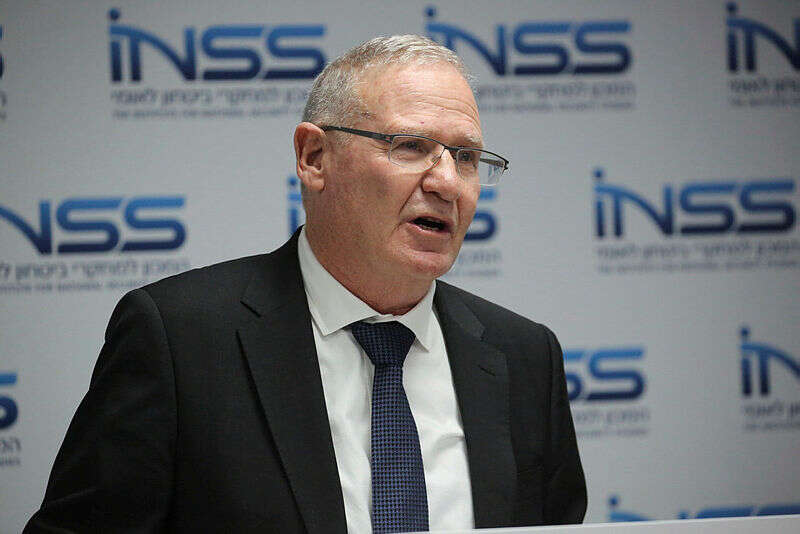
"We must examine and designate the right timing for taking action against the precision weapon project, in the understanding that it can trigger a broad conflagration. Hundreds of precision missiles in the hands of the Iranian axis, particularly Hezbollah, which can cause comprehensive civilian damage in Israel and paralyze vital systems, is a strategic threat that can't be allowed to develop."
According to Yadlin, the watershed moment in terms of the precision threat was the Iranian missile strike on Saudi Arabia's main oil refinery in September 2019, temporarily shutting down some 50% of the country's oil production.
believes that if Hezbollah accelerates its armament efforts, Israel will have to consider a preventative strike to negate the threat. According to other defense officials, Israel mustn't initiate such a strike as doing so would assuredly spark a war. They believe Israel should consider "exploiting the opportunity" of a limited escalation on the northern border to target Hezbollah's precision capabilities.
As a result of this event, the Iranians realized that precision is indeed paramount, and therefore decided to pursue this capability, on all fronts, with everything in their power. This is more difficult for them without Soleimani, but in Yadlin's words: "The train has left the station" and beyond already reaching Yemen could eventually reach Lebanon as well.
"Israel's situation is not the same as the Saudis' situation," Yadlin says. "We have better intelligence, and it's reasonable to assume we'll know about an attack such as [the oil refinery attack] in advance. We have impressive preventative capabilities and we can attack before the launch, and we have detection and defensive capabilities as well, but the threat, in general, is problematic and requires a change of strategy."
Yadlin lists four possible strategies at Israel's disposal: Deterrence (make Nasrallah understand that firing precision missiles at Israel will lead to the destruction of Lebanon); defense (greater investment in interceptors and other systems); pinpoint airstrikes and other operations (which simply delay the inevitable); a preventative strike (which will remove this capability from Hezbollah's hands but open Israel to a broad war).
"The problem is that deterrence could erode or cease to exist if Hezbollah acquires a large stockpile of precision missiles, and defense is incredibly expensive and could still prove insufficient against massive barrages. Therefore, the important discussion should be about prevention. In theory, we do this all the time, but we already need to start thinking about the next stage. It's possible we'll have to implement the Begin doctrine (to prevent nuclear proliferation in the Middle East) against the precision missile threat as well," says Yadlin.
Subscribe to Israel Hayom's daily newsletter and never miss our top stories!
Brig. Gen. (res.) Itai Brun, the former head of MID's Intelligence Analysis Division, who penned the annual situational assessment published by the INSS, has a different opinion.
"The precision missiles are indeed an extraordinarily powerful threat, but these are not nuclear weapons," he tells Israel Hayom.
"The precision missiles are not the end-all and be-all from Hezbollah's perspective. They are part of a broader picture."
Brun continues: "Hezbollah doesn't want a lengthy war; it wants to deliver painful blows that shorten the war and mitigate its fallout. To this end, perhaps all it needs is to launch a small number of precision missiles amid a massive barrage and ground infiltration into Israel. Perhaps all they need is one precise missile hitting a power station or the Knesset to provide the effect they want."
If Hezbollah persists at its present pace of producing precision missiles, it will take it years to reach Israel's red line. But if it accelerates the pace or transitions to manufacturing precision missiles in Lebanon, this timeframe could be reduced significantly. In this scenario, Israel will have to decide whether or not to act to eradicate the greatest and most dangerous conventional threat it faces, or to live with it
Yoav Limor
Source: https://www.israelhayom.com/2021/03/03/hezbollahs-precision-missiles-a-bigger-threat-than-irans-nuclear-program/
Follow Middle East and Terrorism on Twitter
No comments:
Post a Comment